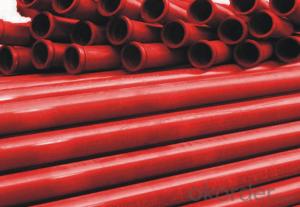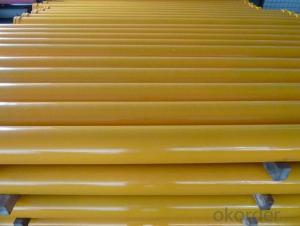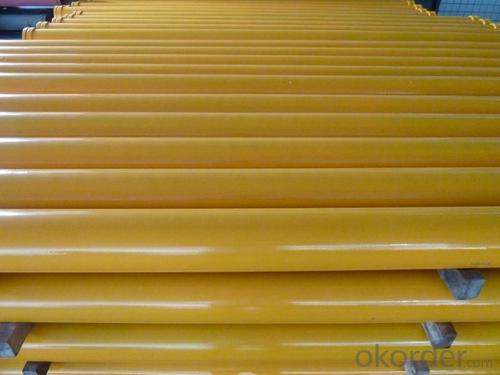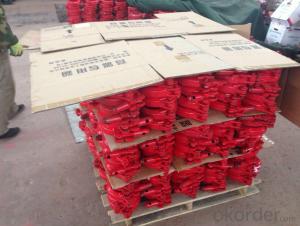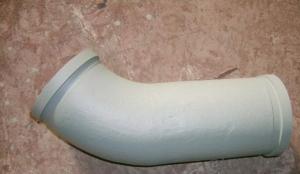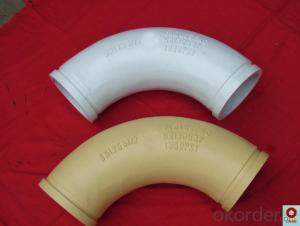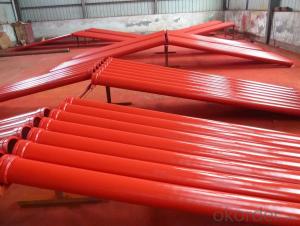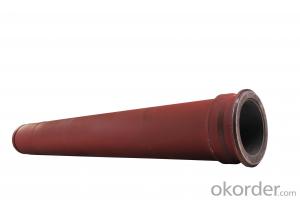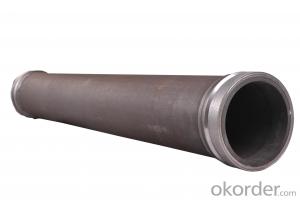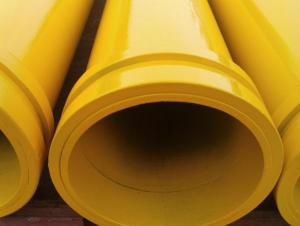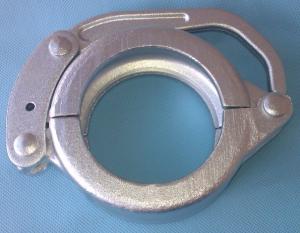Twin Wall Pipe for Concrete Pump Pipe Thickness 4.5mm Length 1000mm
- Loading Port:
- Tianjin
- Payment Terms:
- TT OR LC
- Min Order Qty:
- 50 pc
- Supply Capability:
- 2000 pc/month
OKorder Service Pledge
OKorder Financial Service
You Might Also Like
1. Diameter: DN125
2. Wall thickness: inner wall is 2.5 mm 65Mn, outer wall is 2mm seamless steel
3. Length: 3000&2000&1000mm with wear resistant SK flange
4. Type: Double / twin wall
5. Hardness: HRC 63
6. Using life: 60,000-100,000(CBM)
7. Highlights: longest using life
8. Welding: Smooth welding between straight pipes and flanges
9. Color : as customer's requirement,usually bule or red
10. Surface: Electrostatic Spraying Epoxy Paint
11. Packing: Wrapped by water proof poly-bag to protect the
painting and flanges & seaworthy
or according to customers’ requirements.
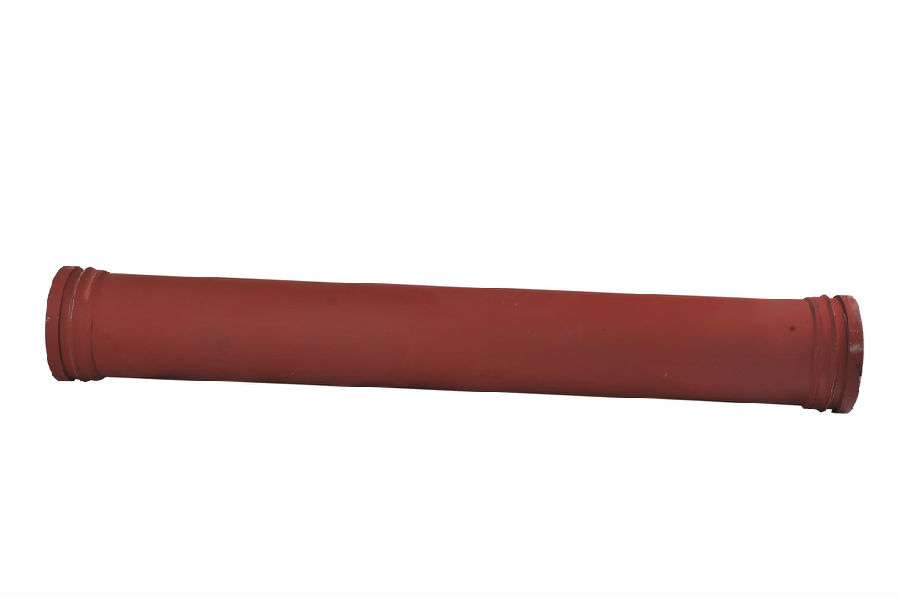
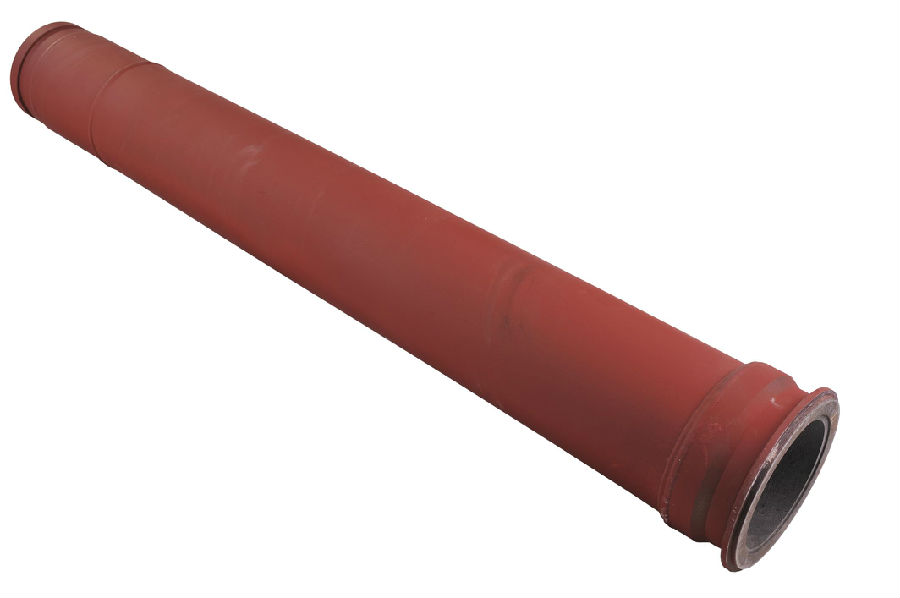
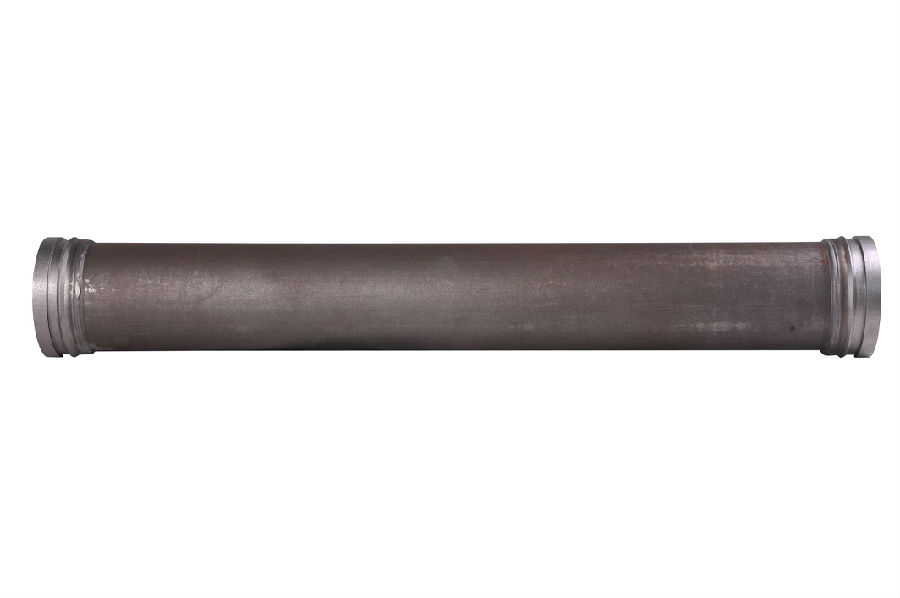
- Q: Can concrete pump spare parts be pre-assembled or pre-tested before installation?
- Yes, concrete pump spare parts can be pre-assembled and pre-tested before installation. This practice ensures that the spare parts are functioning properly and ready for immediate use, saving time and effort during the installation process. Pre-assembly and pre-testing also help identify any potential issues or defects, allowing for necessary adjustments or replacements before installation, ensuring the smooth operation of the concrete pump.
- Q: What is the purpose of a concrete pump agitator motor?
- The objective of a concrete pump agitator motor is to guarantee the uniformity and excellence of the concrete mixture being transported. Its role involves ensuring that the concrete mixture remains well-blended and prevents any settling or separation during the pumping procedure. The agitator motor aids in maintaining a consistent and homogeneous mixture, which is essential for achieving sturdy and long-lasting concrete structures. Through continuous agitation of the concrete inside the pump, the motor assists in averting any obstruction or congestion that may potentially disrupt the pumping operation. In general, the purpose of a concrete pump agitator motor is to optimize the efficiency and effectiveness of the concrete pumping process, ultimately leading to improved construction outcomes.
- Q: How often should concrete pump hydraulic oil coolers be inspected and maintained?
- Concrete pump hydraulic oil coolers should be inspected and maintained regularly, ideally on a monthly basis or as recommended by the manufacturer. Regular inspections and maintenance ensure optimal performance and help identify any potential issues or damage that may affect the efficiency and lifespan of the equipment.
- Q: Are there any specific tools or equipment required for the installation of concrete pump spare parts?
- Yes, there are specific tools and equipment required for the installation of concrete pump spare parts. Some common tools include wrenches, socket sets, screwdrivers, hammers, and pliers. Additionally, specialized equipment like cranes, lifters, and hoists may be needed for lifting and positioning heavy components. It is important to use the appropriate tools and equipment to ensure proper installation and safety.
- Q: How often should wear rings be replaced in a concrete pump?
- Wear rings in a concrete pump should be replaced regularly, typically every 2,000 to 3,000 hours of operation. However, the frequency may vary depending on factors such as pump usage, maintenance practices, and the quality of materials being pumped. Regular inspection and monitoring of wear ring condition are essential to determine the appropriate replacement interval.
- Q: How often should a hopper filter be cleaned or replaced?
- A hopper filter should ideally be cleaned or replaced every 3 to 6 months, depending on the usage and the level of contamination.
- Q: How often should hopper pins be inspected or replaced in a concrete pump?
- Hopper pins in a concrete pump should be inspected regularly, preferably before each use, to ensure they are in proper working condition. The frequency of replacement will depend on various factors such as the quality of the pins, the intensity of use, and the maintenance practices employed. However, it is recommended to replace hopper pins as soon as any signs of wear, damage, or weakening are detected to prevent potential accidents or malfunctions.
- Q: How often should concrete pump clamps be inspected and replaced?
- To maintain proper functioning and detect any wear or damage, it is crucial to conduct regular inspections of concrete pump clamps. The inspection frequency will depend on factors like usage frequency, concrete type, and working conditions. As a general rule, it is advisable to inspect the clamps at least once a month or after every 100 hours of operation, whichever occurs first. This proactive approach will help identify any potential problems early on, preventing them from escalating into major issues. Furthermore, it is essential to visually examine the clamps before each use for any visible signs of damage or wear. This includes checking for cracks, deformations, and loose or missing bolts. The lifespan of concrete pump clamps can vary depending on factors such as clamp quality, intensity of use, and maintenance practices. However, as a general guideline, it is recommended to replace the clamps every 1-2 years or sooner if significant wear or damage is evident. Regular inspections and timely replacements of concrete pump clamps are crucial for ensuring safe and efficient pumping operations. Taking a proactive approach and promptly addressing any potential issues is always preferable to avoid costly repairs or accidents.
- Q: What are the precautions for gas washing of concrete pump?
- During gas cleaning, the personnel shall not be close to the outlet of the discharge pipe, the pipe is turned sharply (if 90 bends) and the compressed air pipe is connected
- Q: How can one determine the correct weight and balance requirements for concrete pump spare parts?
- To determine the correct weight and balance requirements for concrete pump spare parts, one should refer to the manufacturer's specifications and guidelines. These documents usually provide information on the recommended weight limits and distribution for each spare part. Additionally, consulting with industry professionals or engineers with expertise in concrete pump systems can help ensure accurate weight and balance calculations.
Send your message to us
Twin Wall Pipe for Concrete Pump Pipe Thickness 4.5mm Length 1000mm
- Loading Port:
- Tianjin
- Payment Terms:
- TT OR LC
- Min Order Qty:
- 50 pc
- Supply Capability:
- 2000 pc/month
OKorder Service Pledge
OKorder Financial Service
Similar products
Hot products
Hot Searches
Related keywords
